NORMANDY
Society

Society

Popular destinations FRANCE
| Alsace | Ardeche | Auvergne |
| Brittany | Burgundy | Cevennes |
| Corsica | Cote d'azur | Dordogne |
| Jura | Languedoc-roussillon | Loire valley |
| Lot | Normandy | Picardy |
| Provence |
Society
State structure
Under the 1958 constitution, France is a parliamentary republic whose president as head of state has extensive powers. The president has been directly elected by the people by universal suffrage for seven years since 1962. In 2002, the President of France will be elected for a term of five years instead of the current seven years.
The president enacts laws passed by parliament or by the people (in the case of a referendum), signs the decisions of the council of ministers he chairs, appoints the prime minister and, in case of need, can exercise all of the legislative and executive powers. withdraw and declare the dissolution of the National Assembly.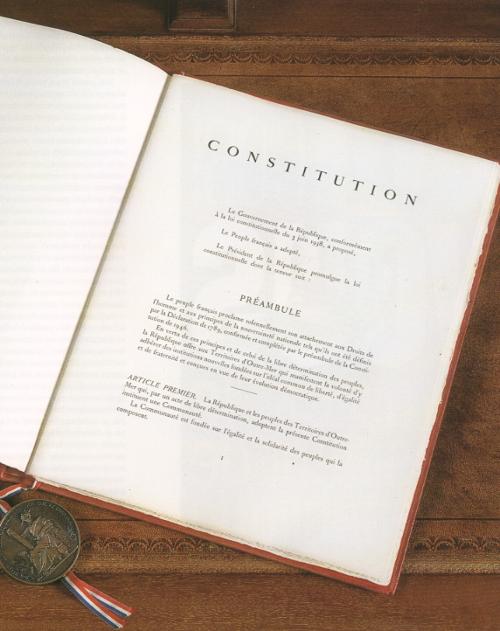 Text of the Constitution of FrancePhoto: Erasoft24 CC 1.0 Generic no changes made
Text of the Constitution of FrancePhoto: Erasoft24 CC 1.0 Generic no changes made
If desired, the president can even replace the prime minister, except when there is a so-called "cohabitation" in the government. This only occurs when the composition of the National Assembly is such that the president is forced to appoint a prime minister of a different political color from his own. After the elections of June 1, 1997, this situation arose when the neo-Gullist president Chirac ruled the country together with a cabinet and a Prime Minister Jospin, who were of leftist signature. The collaboration between Chirac and Jospin went quite smoothly for the first four years.
The government, headed by the prime minister, is proposed and appointed by the president. The government determines and implements the general policy of the country and is accountable to the National Assembly.
Legislative power is exercised by the parliament, which consists of two chambers. The National Assembly (Assemblée Nationale) has 577 members, 22 of whom are from overseas departments and territories. The Assembly is elected for five years through a district system. The senate is mainly elected by the members of the "conseils généraux", the departmental councils, and by the municipal councils.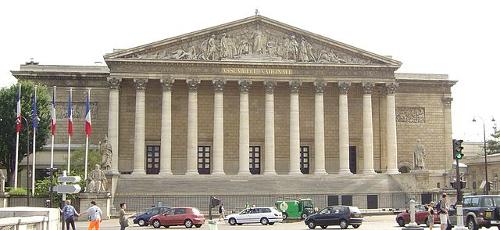 The Assemblée Nationale is located at Palais Bourbon in ParisPhoto: David.Monniaux CC 3.0 Unported no changes made
The Assemblée Nationale is located at Palais Bourbon in ParisPhoto: David.Monniaux CC 3.0 Unported no changes made
The senate has much less powers than the Assembly and has 321 members, 12 of whom are representatives of the French abroad and 13 for the overseas departments and territories. Senate members are elected for nine years and the senate is renewed for a third every three years. The president of the senate is the second highest office holder in the country after the president.
All French citizens of 18 years and older have the right to vote and to be elected to the Assembly one must be at least 23 years old and 35 years old for the Senate. Women have only had the right to vote since 1944.
Parliamentary and presidential elections take place in two rounds. If the candidate manages to obtain more than 50% of the vote in his constituency in the first round of the parliamentary elections, he is immediately elected. If he does not succeed, a second round follows in which a simple majority is sufficient. A condition for the parliamentary elections is that the candidate has obtained at least 12.5% of the votes in the first round.
In the presidential election, only two candidates who obtained the most votes in the first round can participate in the second round. For the current political situation see chapter history.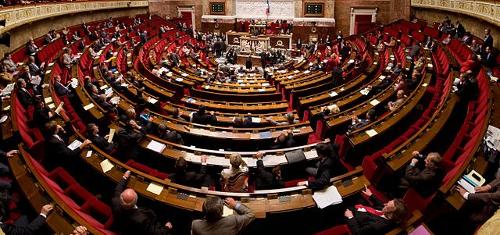 The hemicycle of the National AssemblyPhoto: Richard Ying et Tangui Morlier CC 3.0 Unported no changes made
The hemicycle of the National AssemblyPhoto: Richard Ying et Tangui Morlier CC 3.0 Unported no changes made
Administrative division
The French state has 22 regions, which are divided into 96 departments. The country also has: four overseas departments, the "Départements d'Outre-Mer" (DOM): French Guyana, Guadeloupe, Martinique and Réunion; three overseas territories, the "Territoires d'Outre-Mer" (TOM): French Polynesia, the Wallis and Futuna Islands and New Caledonia; the two overseas 'collectivités territoriales' Mayotte and St-Pierre-en-Miquelon and some areas on the South Pole, "Les Terres Australes et Antarctiques Françaises (TAAF). The prefet is in charge of each region and department and is the representative of the government and of each individual minister.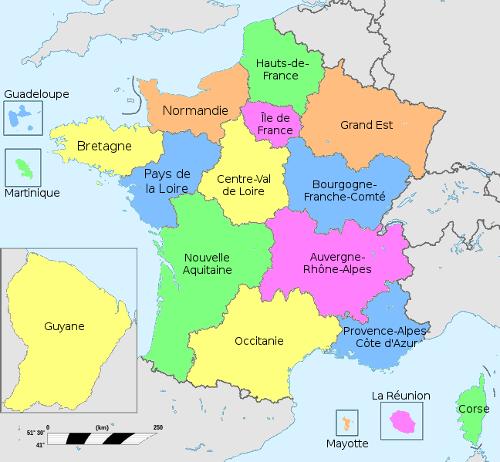 Regions of FrancePhoto: Mightymights CC 4.0 International no changes made
Regions of FrancePhoto: Mightymights CC 4.0 International no changes made
The departments are divided into arrondissements (325), headed by a sous prefet; the arrondissements are divided into cantons (3,714) and these in turn into 36,433 municipalities. Approx. 90% of the municipalities have less than 2000 inhabitants. The arrondissements and cantons have only administrative significance.
The Union of the Corsican People (Union du Peuple Corse) has been fighting for the island's independence for years and has many hundreds of bombings to its name. The region of Corsica has a separate status since 1981, a degree of self-government. The bombings then temporarily abated, but in 1982 more than 800 attacks were committed.
Education
Nursery and primary education
France has a long tradition of pre-primary education. It is therefore not surprising that the percentage of French children attending écoles maternelles is higher than in all other EC countries (excluding Belgium), and amounts to approximately 32% for two-year-olds and 100% for five-year-olds.
Pre-primary education is not compulsory and free in public schools (85% of all schools). The remaining 15% are schools for special or private (private) education that are subsidized by the state and / or region, and / or receive contributions from the families.
Education is compulsory for children from 6 to 16 years old. This obligation applies to primary education (école élémentaire) and the first cycle of secondary education (collège). Most pupils finish the four-year college at the age of 15 and then have to attend school in general technical or vocational education for at least one more year.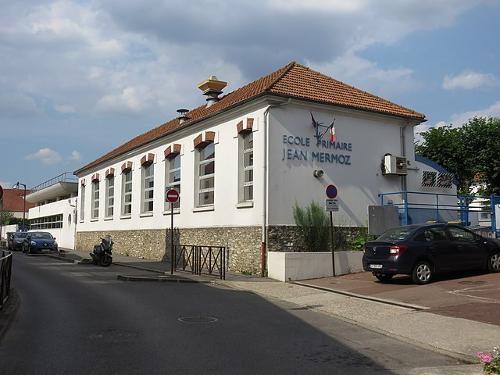 Primary school Roissy-en-FrancePhoto: Antony-22 CC 4.0 International no changes made
Primary school Roissy-en-FrancePhoto: Antony-22 CC 4.0 International no changes made
Primary education, organized and managed by the municipalities, lasts five years and is attended by children aged 6 to 11. The five grades comprise two cycles: the first cycle (cycle des apprentissages fondamentaux) starts in the highest section of the nursery school and further includes the first two years of primary school, which includes a preparatory and a first elementary year.
The second cycle (cycle des approfondissements) covers the last three years of primary school that precede the college. These three years comprise the second year of elementary training and the first two years of further training.
Secondary education
The first cycle of secondary education lasts four years and is intended for pupils aged 11 to 15 and is again divided into three cycles: the adaptation cycle, the intermediate cycle and the orientation cycle. The second cycle of secondary education comprises general, technical and vocational education, which is given in lycea (lycées).
General and technical secondary education prepares students in three years for the examination of the general baccalaureate or the technical baccalaureate.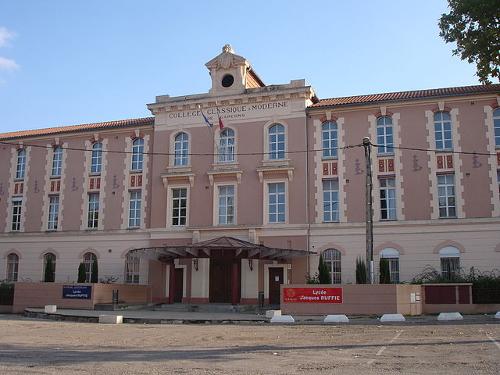 Secondary school Limoux FrancePhoto: Pinpin CC 3.0 Unported no changes made
Secondary school Limoux FrancePhoto: Pinpin CC 3.0 Unported no changes made
The vocational schools prepare the pupils in two years for the "certificat d'aptitude professionelle" (CAP) and the "brevet d'études professionelles" (BEP). The CAP is more specialized than the BEP and is issued for general professional skills, not in a specific subject but in one professional-commercial, administrative or social sector. After another two years, they can take an exam for the professional baccalaureate (baccalauréat professionnel). At the college, the study of a foreign language is compulsory from the sixth grade and from the 4th grade a second foreign or a regional language is learned. The study of a foreign language is compulsory in general and technical education.
At the end of the third year, pupils take a national exam with a view to obtaining the "diplôme national du brevet". The diploma is a general study certificate that does not determine the later choice of study.
General and / or technical education is concluded with a general or technical baccalaureate. Those who pass will gain access to higher education
Higher education
Higher education is provided in France by a wide variety of institutions. The organization and admission requirements differ according to the type of institution and the objective of the education provided.
Higher education institutions include:
-Universities that provide short courses and long courses. France has more than 70 universities. The Sorbonne in Paris is the oldest and dates back to the twelfth century.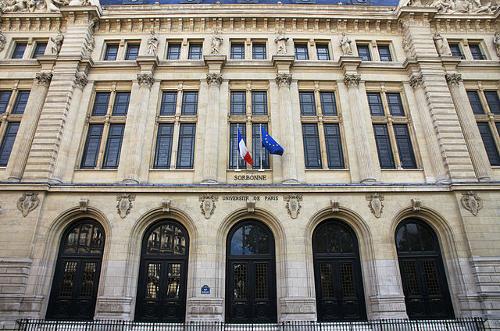 Entrance main building Sorbonne, ParisPhoto: NonOmnisMoriar CC 3.0 Unported no changes made
Entrance main building Sorbonne, ParisPhoto: NonOmnisMoriar CC 3.0 Unported no changes made
-Public and private schools and institutions supervised by a ministry and providing higher professional education. Again, short courses and longer of three years or more after the baccalaureate.
-The "lycées d'enseignement général et technologique" also offers post-baccalaureate courses that prepare for higher technical courses that prepare for the "brevet de technicien supérieur" in two years
-long three-year courses are given to the "grandes écoles" which are private or public. Most of the higher officials and engineers in France come from this type of educational institution.
Typical Normandy
Tide
Tides are caused by the moon and slightly less by the sun. When the moon is above the sea, it attracts the water, causing the water to rise and the tide to rise. When the water has reached its highest level after some time, it is called high tide.
After six hours the moon is no longer above the sea and the attraction decreases. The water level then drops again and this is called low tide. The lowest water level is called low tide.
Every fortnight, when the sun and the moon are in one line, the greatest tide difference is caused, the so-called spring tide. This phenomenon occurs at new or full moon. When the sun and the moon are in opposition to each other, they cause the smallest possible tidal difference, the so-called neap tide.
The highest spring tide in France, the equinox tide, occurs during the equinox or day and night equinox in the months of March and September, when the day and night are equally long.
The difference in water level between high and low tide is called tidal range and in Normandy it can be up to 15 metres at spring tide in the bay around Mont-St-Michel. It is also the largest tidal range observed on the coast of continental Europe. The water retreats up to 15 km from the coast and then rises again, increasing towards the end of the tide.
CIDER and CALVADOS
Cider (French: cidre) has been made since the Middle Ages and is the drink of choice in Normandy. This lightly sparkling cider is still made traditionally in some places, but most cider now comes from factories.
The traditional method is as follows: the apples are kept in large baskets for a while, after which they are crushed with a wooden millstone in a round granite trough.
The apple pulp or 'marc' thus obtained is transferred to a press and squeezed between rye straw. The juice flows over a smooth floor to a gutter and is then drained. After pressing, the rye straw is removed and the apple pulp rests in a barrel before a second pressing. The first pressing, however, produces the pure cider.
There are different types of cider: sec (dry, alcohol percentage 4-5%), brut (semi-sweet) and doux (sweet, alcohol percentage 2.5-3%). Cider may not contain more than 5% alcohol by law and must be drunk within a few months of purchase.
The most famous apellation, the 'cidre de la Vallée d'Auge', counts five different cru's: Blangy-le-Château-Pont-l'Évêque, Cambremer, Lisieux-Orbec, Livarot and Vimoutiers. French apple varieties from which cider is made include Frequin, Marin Onfroy, Closette, Bisquet and Bedan.
Calvados (also called "calva"), the famous apple brandy named after one of the production regions, is made from fermented apple pulp that is distilled twice and matured in oak barrels for six to ten years. More than 10 million bottles of calvados are produced every year.
The name calvados probably originates from the beginning of the 19th century, but apple brandy was already mentioned for the first time in the 16th century.
Calvados was granted the AOC (Apellation d'Origine Contrôlée) designation in 1942 and there are two appellations: "Calvados" and "Calvados de Pays d'Auge". To be entitled to the designation "calvados", the brandy must be made from cider containing at least 4.5% alcohol. The taste of calvados is somewhat similar to that of cognac, especially when aged in barrels for a long time.
The quality of calvados is measured by its age. From three stars (2 years old), through Réserve (3 years), to Grande Réserve (5 years). Très Vieille Réserve (6 years) is the highest achievable.
CAMEMBERT
This soft cheese is one of the symbols of France and the pride of Normandy. Camembert de Normandie' is still produced using an almost unchanged technique.
First, raw milk with added rennet is heated at 30°C for two hours. The resulting curd is then spooned into moulds and left to drain for at least four hours.
It is then taken out of its mould, salted and left to dry in a drying room. The curd remains here for 12 days and is then taken to the maturing cellar.
There the cheeses remain for four to six weeks. The camembert has a fat percentage of at least 45%.
Because the name camembert is unprotected, the cheese is copied all over the world. The original camembert can be recognised by its typical box and the designation V.C.N. (Véritable Camembert Normand). More than 30 million camemberts are produced every year and sold all over the world.
MONT-ST-MICHEL
Mont St-Michel is a volcanic island perched high above the surrounding area in the middle of sand banks. The granite rock is 80 m high and has a circumference of approx. 925 m. On the top is a beautiful abbey with a statue of the archangel Michael. This statue stands at approx. 152 metres above sea level.
The abbey dates back to the 8th century when the bishop of Avranches founded a chapel there. It was only in the 13th century that fortifications were built. During the French Revolution, Mont-St-Michel was used as a prison, and it was only in 1966 that the abbey was religiously occupied again.
Strictly speaking, the abbey hill lies in the Norman part of the bay, because the border of Brittany lies further to the west. Since 1877, a dyke has made it possible to reach the island with dry feet.
Both the rock and the bay are on the UNESCO World Heritage List.
Sources
Graaf, G. de / Normandië, Bretagne
ANWB
Normandië
Touring/Lannoo
Normandië, Kanaaleilanden
Michelin Reisuitgaven
Normandië, west : Caen, Mont-St-Michel, Guernsey, Jersey
Lannoo
Radius, J. / Normandië, Bretagne
Gottmer/Becht
Reiser, H. / Normandië
Van Reemst
Vermoolen, S. / Normandië
ANWB
CIA - World Factbook
BBC - Country Profiles
Copyright: Team The World of Info